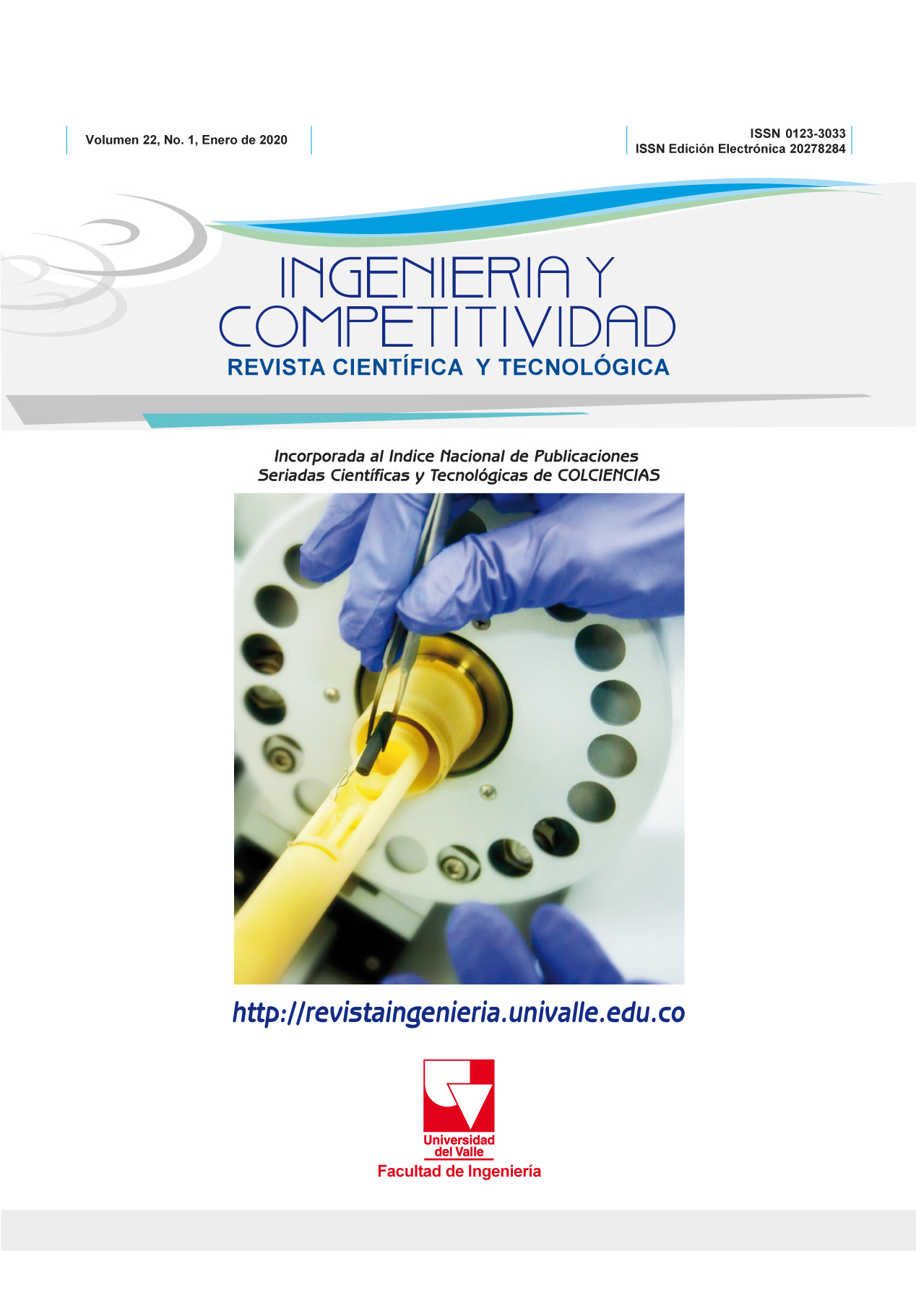Flujo de Residuos del Tratamiento de Aguas Residuales en el sector industrial de Cali zona urbana y periurbana, zona franca de Palmira y Yumbo
Contenido principal del artículo
Este trabajo presenta la investigación realizada en cuanto al manejo de residuos (conocidos para este caso como lodos y grasas) provenientes del tratamiento de aguas residuales industriales y domésticas de empresas ubicadas en la zona industrial de Cali, zona urbana y periurbana, y zona franca del municipio de Palmira y Yumbo. Se desarrollaron dos etapas cuyos objetivos fueron respectivamente: 1) identificar los generadores de lodos y grasas, y 2) evidenciar las prácticas de manejo por parte de los gestores (empresas que prestan el servicio de mantenimiento, recolección o tratamiento a los residuos generados). Finalizando estas etapas, se elaboró el flujo de estos residuos en la zona de estudio. Lo anterior permitió obtener un compilado de datos que describe la forma en que ocurre el manejo de este tipo de residuos para generar una visión de la problemática en el Valle del Cauca, como base para futuras investigaciones en torno a dar soluciones técnicas para manejo de estos residuos. Para el año 2014, en la zona de estudio se encontraron alrededor de 921 industrias, de las cuales 85 tenían sistemas de tratamiento de aguas residuales (por lo tanto, son generadoras de residuos). Por otra parte, se encontraron 28 empresas gestoras de residuos. En esta investigación participaron voluntariamente 22 empresas generadoras y 10 gestoras. El volumen aproximado de lodo y grasa que generan estas empresas es 368 toneladas por mes. De esta cantidad, solo 159 toneladas por mes (43 %) es aprovechado como acondicionador de suelos, abono, humus o para sustitución de materias primas. A pesar de que un buen porcentaje de lodo es aprovechado, como conclusión se identificó que se requieren políticas ambientales que incentiven estas alternativas para reducir los impactos sobre el ambiente.
- Flujo de residuos
- Generadores
- Gestores
- Lodos y grasas
- Sector industrial
(2) Althaf A, Babbitt C y Chen R. Forecasting electronic waste flows for effective circular economy planning. Resouces, Conservation & Recycling. 2019;151:104362. Doi: 10.1016/j.resconrec.2019.05.038.
(3) Ilankoon I, Ghorbani Y, Chong M, Herath G, Moyo T y Petersen J. E-waste in the international context – A review of trade flows, regulations, hazards, waste management strategies and technologies for value recovery. Waste Management. 2018;82:258-275. Doi: 10.1016/j.wasman.2018.10.018.
(4) Odeyingbo A, Nnorom I y Deubzer O. Used and waste electronics flows into Nigeria: Assessment of the quan- tities, types, sources, and functionality status. Science of Total Environment. 2019;666:103-113. Doi: 10.1016/j.scitotenv.2019.02.102.
(5) Camilleri-Fenech M, Oliver-Sola J, Farreny R y Gabarrell X. Where do islands put their waste? e A material flow and carbon footprint analysis of municipal waste management in the Maltese Islands. Journal of Cleaner Production. 2018;195:1609-1619. Doi: 10.1016/j.jclepro.2017.07.057.
(6) Guo H, Zhao Y, Damgaard A, Wang Q, Lu W, Wang H, Christensen TH. Material flow analysis of alternative biorefinery systems for managing Chinese food waste. Resouces, Conservation & Recycling. 2019;149:197-209. Doi: 10.1016/j.resconrec.2019.05.010.
(7) Islam T y Huda N. Material flow analysis (MFA) as a strategic tool in Ewaste management: T Applications, trends and future directions. - Management. 2019;244:344-361. Doi: 10.1016/j.jenvman.2019.05.062.
(8) Makarichi L, Techato K y Jutidamrongphan W. Material flow analysis as a support tool for multicriteria analysis in solid T waste management decision-making. Resouces, Conservation & Recycling. 2018;139:351-365. Doi: 10.1016/j.resconrec.2018.07.024.
(9) Zhang L y Xu Z. A critical review of material flow, recycling technologies, challenges and future strategy for scattered metals from minerals to wastes. Journal of Cleaner Production. 2018;202:1001-1025. Doi: 10.1016/j.jclepro.2018.08.073.
(10) Corporación Autonoma Regional del Valle del Cauca. Empresas-con-licenciade-CVC-para-manejo-de-respel. Santiago de Cali: CVC; 2014. Base de datos de gestores autorizados por CVC.
(11) Departamento Administrativo Nacional de Estadística. Clasificación industrial internacional uniforme de todas las actividades económicas - Revisión 4 adaptada para Colombia. Bogotá DC: DANE; 2009.
(12) Ministerio de Ambiente y Desarrollo Sostenible. Decreto 1076 de 2015 - Decreto único reglamentario del sector ambiente y desarrollo sostenible. Bogotá DC: MADS; 2015.
(13) Ministerio de Ambiente y Desarrollo Sostenible. Gestión integral de residuos o desechos peligrosos, bases conceptuales. Bogotá DC: MADS; 2007
Descargas

Esta obra está bajo una licencia internacional Creative Commons Atribución-NoComercial-CompartirIgual 4.0.
Los autores que publican en esta revista están de acuerdo con los siguientes términos:
Los autores ceden los derechos patrimoniales a la revista y a la Universidad del Valle sobre los manuscritos aceptados, pero podrán hacer los reusos que consideren pertinentes por motivos profesionales, educativos, académicos o científicos, de acuerdo con los términos de la licencia que otorga la revista a todos sus artículos.
Los artículos serán publicados bajo la licencia Creative Commons 4.0 BY-NC-SA (de atribución, no comercial, sin obras derivadas).





